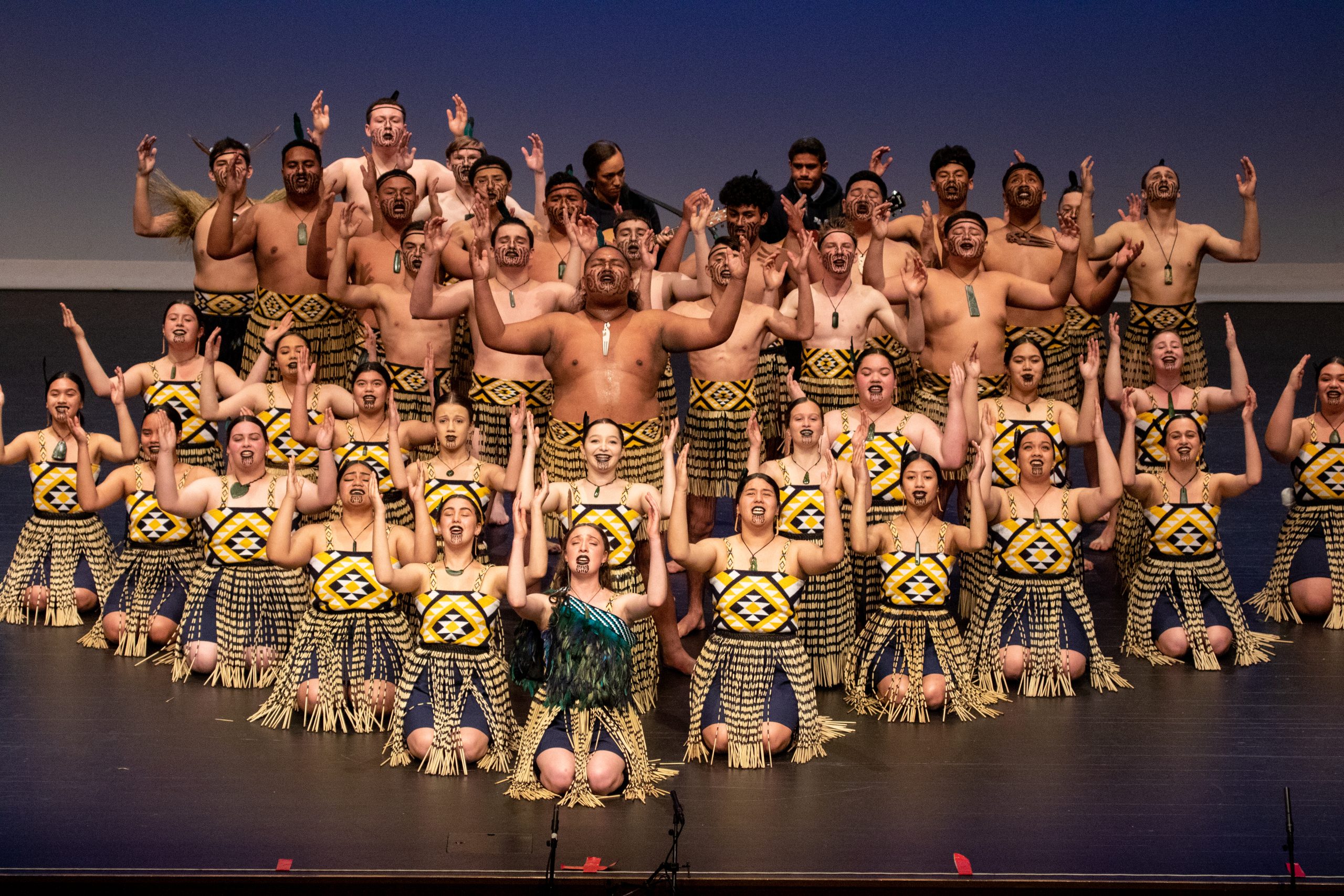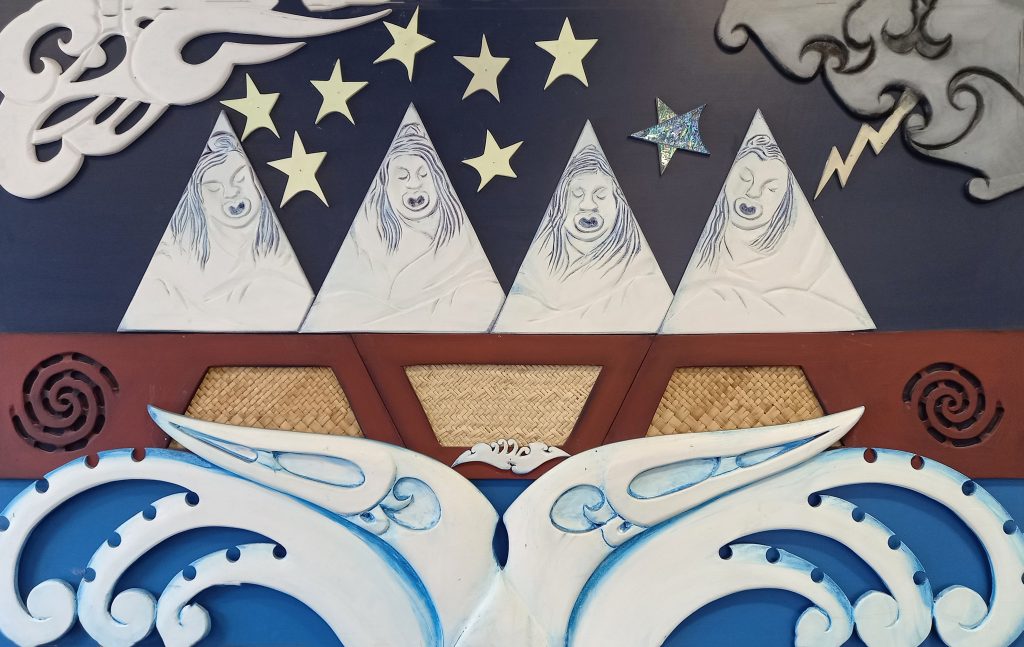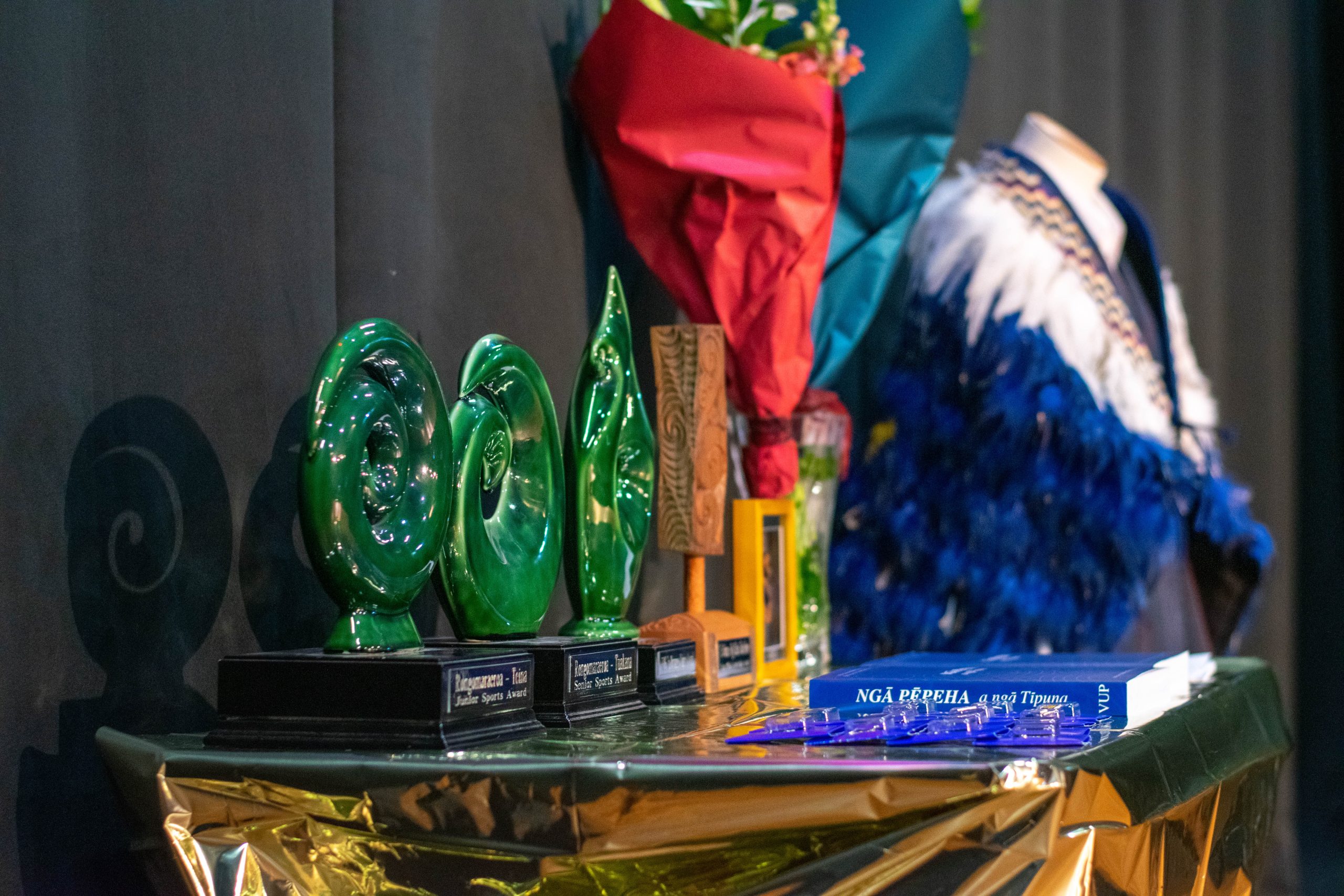
Kaupapa Māori
Ko Te Kura Tuarua o Pūtaringamotu e mihi atu nei ki a koutou te mana whenua Ko Ngāi Tūāhuriri.
Ko koutou e mānaaki nei i a mātou i runga i te whakaaro kōtahi, nō reira tēnā koutou katoa.
Our Aims
Te Kura Tuarua o Pūtaringamotu falls within the rohe of Ngāi Tūāhuriri. We highly value our connection with mana whenua and have a memorandum of understanding between Ngāi Tūāhuriri and our kura to:
- Strengthen the relationship between the school and local iwi
- Work together to achieve tangible outcomes to enhance Māori student success
- Improve Board of Trustees, staff, student and whānau knowledge of mana whenua reo and tikanga
- Collaborate to enhance and implement a localised mana whenua curriculum
- Provide a forum to consult on safe cultural practices
- Document the process as an example for other schools
We acknowledge Te Ngāi Tūāhuriri Education Committee for their guidance, education and support.
We continue to work closely with mana whenua to explore the cultural narrative of our kura. Our geographical proximity to Pῡtaringamotu (the original name for Riccarton Bush) informs the name of our school: Te Kura Tuarua o Pūtaringamotu. Pῡtaringamotu is the only remaining remnant from a time when kahikatea swamp forests once covered large areas of the Canterbury Plains. Pῡtaringamotu holds historical significance in regard to the cultural and social practices of mana whenua prior to European settlement.
The Kahikatea Tree
The Kahikatea tree is also of significance to Riccarton High School. The mighty tree has a shallow root system so its survival depends on entwining its roots with other kahikatea – therefore offering symbolism of creating a unity of purpose.


Komiti
The Komiti Kaupapa Māori exists to promote biculturalism, embrace Te Ao Māori and uphold Te Tiriti in our Kura. We support our ākonga in their reo and māoritanga. This komiti meets fortnightly and includes our Mana Toroa student leaders, kaiako and Pou Whirinaki (Deputy Principal).
Ngā Uara O Pūtaringamotu
Our Te Wairua o Pūtaringamotu values of Kairangi (excellence), Manaakitanga (respect), Ngākaupono (honesty) and Manawanui (commitment) are woven throughout everything we do at our kura.

WAIHO I TE TOIPOTO, KAUA I TE TOIROA Let us keep close together, not wide apart
- Opportunities
- Achievements
- Marae Haerenga
- Matariki
Kapa Haka
WHAOWHIA TE KETE MĀTAURANGA
Fill the basket of knowledge
Kapa haka is an avenue for our tauira to be culturally-connected learners who embrace tikanga, te reo and te ao Māori through Māori performing arts. Through belonging to the kapa haka rōpū, our ākonga gain confidence to express themselves through waiata, haka, mōteatea and poi. They also form positive relationships with kaiako, tutors and other students.
There are also many opportunities for student leadership and tuakana-teina connections.
Kapa Haka o Pūtaringamotu represents the kura at school events including pōwhiri, mihi whakatau, and senior prizegiving. For whakataetae (competitions), we compete as Te Hononga Wairua – a combined rōpū of Riccarton High School and St Thomas of Canterbury students. The hono between our two kura allows us to stand proudly together at whakataetae like the Tūhono Festival and Waitaha Regional Kapa Haka Competition.
Participating in kapa haka is an opportunity for our Māori ākonga to embrace their māoritanga, but students of all ethnicities are encouraged to join the rōpū.
Mana Toroa
INA TE MAHI, HE RANGATIRA
See how he does, a leader indeed!
The aim of Mana Toroa is to uphold the presence of te ao Māori within Te Kura Tuarua o Pūtaringamotu, and to support the self-determination of all Māori ākonga. Mana Toroa represents the voices of Māori ākonga and works alongside the Kaupapa Māori Committee to meet the needs of the Māori student body. To ensure this, it is the role of Mana Toroa to hold events such as the Māori student hui, whānau hui and Pō Whakanui.
As representatives of Te Ao Māori, it is also the role of Mana Toroa to utilise available platforms to educate and encourage all aspects of te ao Māori, from a Māori perspective. Mana Toroa works with different areas in the school to facilitate an inclusive and positive engagement with te ao Māori.
Ē Tahi Atu Hononga
Other opportunities available for Māori ākonga at Te Kura Tuarua o Pūtaringamotu:
Ngā Manu Kōrero – speech competitions
Tūhono – Annual Kapa Haka competition for Waitaha kura
Te Puna Pūtaio – Science outreach programme for Year 10 Māori ākonga
Aukaha Tau Tekau/Tekau mā rua – Year 10 and Year 12 Māori ākonga discovery days at University of Canterbury
Te Pae Tawhiti Ōtautahi – run by Young Enterprise Trust for Māori rangatahi
Ringa Toi – exhibition showcasing student artwork, focusing on Toi Māori
Karahipi – Scholarships for tertiary study
Scholarships for Māori learners
Ngāi Tahu Whakapapa registration link

HE AHA TE MEA NUI O TE AO? HE TANGATA, HE TANGATA, HE TANGATA.
Te Reo Rangatira Award: Te Korowai
Ko te kai o te rangatira, he kōrero.
In 2010 in effort to raise the profile of Te Reo Māori at Te Kura Tuarua o Pūtaringamotu, and give mana to the highest achieving student in Te Reo Māori at the end of each year, a korowai was made.
Nā ngā ringa Toi, nā te aroha hoki o tēnā o tēnā, kua hangaia tēnei o ngā taonga.
Blue raukura were chosen to represent the core colour that Riccarton High School is identified by, with gold highlights – taken from the kura crest.
All students and kaiako at the kura during this year were invited to place an individual raukura into the korowai as it was being sewn. In doing so, their aroha was embedded into this taonga and would remain at the kura long after they had moved on.
The taniko was hand stitched by Jo Brown (Ngāti Mahuta, Ngāti Tāhinga) taking 82 hours to complete.
The taniko consists of a poutama design. The poutama (or steps) represent the various levels of learning and academic achievement, and acknowledge Tāne ascending to the heavens in his quest for superior knowledge.
The first recipient of the korowai was Rachel Gray (Ngāti Porou), and it was the vision that her and every recipient that followed would have their name and iwi stitched inside each year.
Pō Whakanui
KO TE KAI RAPU, KO IA KA KITE
He who seeks will find
Our Pō Whakanui, held in term four each year, is an end-of-year celebration for our Māori ākonga. This event is organised by our rangatahi, who cater and facilitate a special evening of whakawhanaungatanga and whakanui. We celebrate the academic, sporting, and cultural success of our ākonga. Whānau, kaiako and our wider community are all invited to this very special event to tautoko our rangatahi.
Whakawhiwhinga
- The Manukura o Pūtaringamotu korowai recognises a Year 13 student who positively embodies Te Ao Māori as a whole within the school and wider community.
- Te Wairua o Ngā Mahi o Tāne-Rore – Tuakana award for Kapa Haka
- Te Wairua o Ngā Mahi o Hine Rehia – Teina award for Kapa Haka
- RHS Te Hononga Wairua Award – for the combined Kapa Haka rōpū
- Te Mana o Te Reo Māori – tuakana award for top achievement in Te Reo Māori
- Laugesen Whānau Te Ringatoi Māori – for excellence in the Arts
- Rongomaraeroa award – tuakana and teina awards for top sportspeople
- Note: Ngā kete academic awards are presented at our academic assemblies in term one.
YEAR 9
Each, year all of our Year 9 students have the opportunity to visit Rapaki marae as part of the curriculum.
The visits will take place in the last week of term one, or in the second week of term two – each visit will leave school at 8:30 in the morning and return to school during period four. Students will wear school uniform and a small morning tea will be served at the marae.
Students will prepare for their visit in their whānau class, learning about the pōwhiri and marae tikanga and practicing their mihi/pepeha to use on their visit.
YEAR 10
Building on their visit to Rapaki marae the previous year, all Year 10 students visit the Rehua Marae on Springfield Road.
These visits will usually take place in term three.


Each winter the stars of Matariki and Puanga signal the end of one year in Aotearoa and the beginning of the next.
Traditionally Māori have recognised the rise of Matariki as a time to celebrate and prepare for the indigenous New Year. It was a time when crops were harvested, and seafood and birds were collected – a time of celebration and plenty, but also a time for preparing and storing for times of shortage ahead.
Matariki was a time to practice manaakitanga – to share kai and present offerings to others.
Nowadays during Matariki we can express manaakitanga by:
- Acknowledging the value of healthy kai as a taonga for achieving hauora Māori
- Offering healthy kai to whānau and manuhiri
- Using koha kai as a way of supporting and nurturing others.
The stars of Matariki
Matariki is the Māori name for a cluster of stars – a seven-star constellation that usually appears in late May or early June each year.
There are two translations for Matariki – ‘eyes of god’ (mata ariki) or ‘little eyes’ (mata riki). According to legend, when Ranginui (sky father) and Papatūānuku (earth mother) were separated by their children, the god of the winds, Tāwhirimātea, became so angry that he tore out his eyes and threw them into the heavens.
